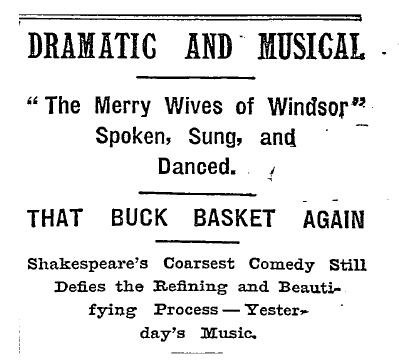 Fall is here. Summer may snap back in a week, but for now, humor me and let me believe that fall is here.
Fall is here. Summer may snap back in a week, but for now, humor me and let me believe that fall is here.
Some of my fondest memories of falls long past center around Saturday mornings and afternoons spent in downtown Chattanooga. When I was in high school, a term paper assignment was a license to do weekend research at the Bicentennial Library. My nerdy friends and I, we would go to the library around 9 or 10 in the morning, driven there by my mom. Usually, we’d find the books we needed, check them out quickly, then ask the librarians at the front desk to hold our bounty until we returned. From there, we’d strike out to explore the alleys and parks and storefronts of downtown.
But sometimes, books would not be enough. Every once in awhile, we’d be given assignments that required the temporal immediacy of ancient newsprint. And back then, if you wanted to travel back in time to read a century-old article, the only way to make the journey was via microfilm. Or microfiche.
Of the two, microfilm was more fun. Once you tracked down the article you wanted (by subject), you’d find the spool of archived 35mm film (by date). These were kept in wide-drawered filing cabinets, spans of years in labeled boxes. The Bicentennial Library had microfilm for not only the local Chattanooga newspaper, but the New York Times as well.
For your first time, you’d best let the media center supervisor assist you. But once you’d seen it done a couple of times, it was a simple matter to run out a bit of film from the archived roll, then thread it from one spool to another. The microfilm reader was this monstrous console with a large glass screen. When seated at the reader, it felt a bit like a arcade racing game, like Pole Position or Outrun. The screen was at eye-level and a bit above. At your fingertips were controls to manipulate the spooled microfilm forward and back. Just sitting there, threading the spools or reading an article, the reader gave off a steady mechanical hum. But when you moved the controls to go forward or backward in time, the reader roared. It whooshed, moving faster or slower by manual command. Articles (complete with ads) streamed past so quickly, but you’d find your date eventually. And once you found the date, you could scan for your article.
But then came the greatest thing of all. You could take copious notes, of course, just sitting there and staring at the projected text, but the far better thing was to take the article home. And to do that, you’d have to select the portion of the film you wanted by easing the controls backwards and forwards carefully. Once found, you’d tell the reader to print, either through a marked button or some odd manipulation of the controllers. Printing sent the reader into a different cycle of noises, followed by an accompanying scent of mimeograph ink being baked onto tabloid-sized paper. The smell was just incredible. It smelled like the library, like history. And once it printed, big as life and close to actual, original size, not only did you have a resource for your research, but something almost real.
You could paste those printed articles onto a piece of poster board, three across. Add to that a couple of pages about panning for gold and a rough drawing of a bearded prospector, and what you have is a truly impressive presentation about the the 1829 Georgia Gold Rush. Not only a guaranteed A (or a B, at least), but also something truly classic that would be remembered fondly by teachers for years and years to come.
And so, it pleases me greatly to see that the New York Times has not only ceased their proprietary Times Select subscription service — the means through which they hid their “better” content behind a paid password — but they’ve made over a century’s worth of archives available online, some of them as PDF’d scans of the original articles (like this Merry Wives theatrical review from 1898). A search for most anything returns thousands of results.
Admittedly, a PDF document isn’t nearly as satisfying to the senses as a time-traveling microfilm reader, but at least you can get the look and feel. You just have to make the humming and whooshing noises yourself.
And while we’re talking about Merry Wives, perhaps you’d like to see some Merry Wives of your own?
One response to “Time-Traveling Via Microfilm”
I used to love the microfiche smell too, and how you had to move everything the opposite of how you actually wanted it to go, but after doing my thesis on Atlanta newspapers from 1913-1915, I could be satisfied with no more microfiche.